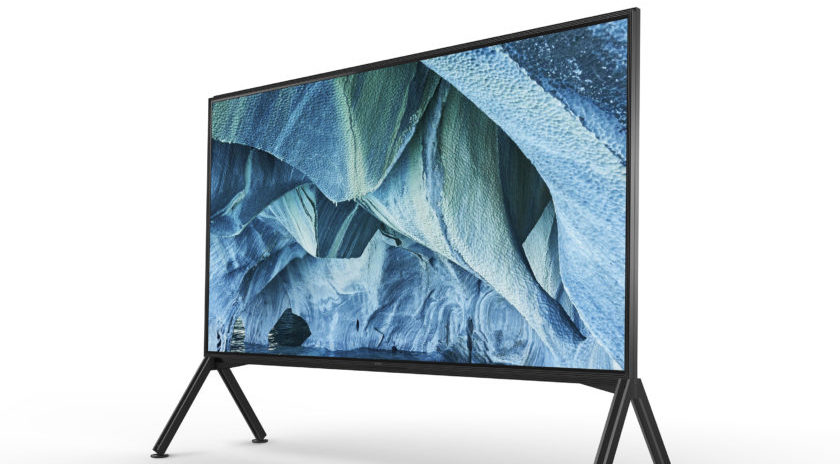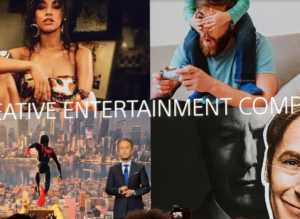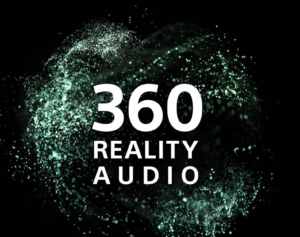NEWS
CES 2019: Sony Unveils Its First 8K TVs, ‘360 Reality Audio’
January 11, 2019

By Jeff Berman
Sony used the Consumer Electronics Show (CES) to take the wraps off its first 8K LCD TVs and introduce “360 Reality Audio,” a new music experience based on the company’s object-based spatial audio technology that makes listeners feel as if they’re immersed in sound from all directions, even while wearing headphones.
The company’s expanded Bravia Master Series line of TVs now includes Z9G, its first 8K LCD TVs, which come in massive 98-inch and 85-inch SKUs and feature the next-generation X1 Ultimate image processor equipped with 8K ultra-resolution algorithm custom database.
The latter enables Sony’s 8K X-Reality PRO picture processing to “up-convert any content to 8K resolution,” the company said in a news release.
Sony’s Backlight Master Drive technology also features a new LED module and control algorithm it said was optimized for 8K. The sets’ Acoustic Multi-Audio, meanwhile, features four speakers located above and below the screen that provide the impression that the audio is coming right from the screen.
The 8K sets were shown at Sony’s CES booth, along with its new flagship 4K OLED Bravia Master Series A9G models in 77-, 65- and 55-inch sizes. The new models are about half the thickness of previous models when wall-mounted, Sony said. In addition to X1 Ultimate, the new 4K sets feature unique Pixel Contrast Booster panel control technology, which it said, “faithfully reproduces everything from the deepest blacks to the highest luminosity colors with stunning vibrancy.”
 The new 4K models also feature Acoustic Surface Audio+ technology that Sony said “produces sound from the screen itself harmonizing the image and audio for a cohesive and immersive high-quality surround-sound experience,” as well as Center Speaker Mode when used in a surround sound home theater system. The new sets are also compatible with Dolby Atmos and feature Netflix Calibrated Mode that Sony said lets users enjoy view content from Netflix “exactly the way the creators intended.”
The new 4K models also feature Acoustic Surface Audio+ technology that Sony said “produces sound from the screen itself harmonizing the image and audio for a cohesive and immersive high-quality surround-sound experience,” as well as Center Speaker Mode when used in a surround sound home theater system. The new sets are also compatible with Dolby Atmos and feature Netflix Calibrated Mode that Sony said lets users enjoy view content from Netflix “exactly the way the creators intended.”
The sets are also part of the Imax Enhanced certification program that is the result of collaboration between Sony’s engineers and Imax, DTS and content creators to “faithfully deliver creators’ vision and intent,” Sony said.
The new TVs, however, took a back seat to 360 Reality Audio and updated PlayStation video game console hardware sales data during Sony’s CES news conference Jan. 7.
The results provided by 360 Reality Audio are “truly spectacular” and it will “elevate the listening experience for the consumer,” Rob Stringer, Sony Music Entertainment CEO, said during the news conference, adding his division was already “rolling out titles across our vast catalog.”
Sony is in talks with major music labels, music distribution services and other music organizations to build a “musical ecosystem” around 360 Reality Audio, which will include the creation, distribution and playing of music content,” Sony said.
At the same time, Sony is working to promote this new music experience to music creators, artists, and music fans, it said in a news release.
 In addition to Sony Music, Warner Music Group (WMG) also vowed its support. “We are impressed with what we have heard so far, and happy to support the launch of this new technology,” Ole Obermann, WMG chief digital officer and EVP of business development, said in Sony’s announcement.
In addition to Sony Music, Warner Music Group (WMG) also vowed its support. “We are impressed with what we have heard so far, and happy to support the launch of this new technology,” Ole Obermann, WMG chief digital officer and EVP of business development, said in Sony’s announcement.
Musical artists and music creators will be able to create a “360-degree musical experience by mapping sound sources such as vocals, chorus and instruments with positional information of distance and angle to suit their creative and artistic purpose,” according to Sony. “When listeners play back the resulting content, they can enjoy a music experience that immerses them in sound from every direction as intended by the content creator,” it said.
The company’s focus is to offer 360 Reality Audio via streaming services, Peter Rowell, Sony retail sales supervisor, told the Media & Entertainment Services Alliance (MESA) after we received a demonstration of the technology using one of the company’s higher-end headphones that sell for about $900.
The initial plan is for four streaming services to feature the technology, Sony said: Deezer, nugs.net, Qobuz, and Tidal. Sony plans to release a format that’s “optimized for music distribution,” it said. With the cooperation of Fraunhofer, the format will be compliant with the MPEG-H 3D Audio open audio coding standard, Sony noted.
No official market launch date for 360 Reality Audio was available yet, Rowell said. He also told us he wasn’t aware of any plans by Sony to offer the technology via a current or new optical disc format.
Sony is “looking into the potential for a variety of audio devices to support this new music content, but it will initially focus on technological development of Sony’s headphones and speakers,” it said.
Not any headphones will be able to support the technology, according to Rowell, who said only select ones with “mid- to higher-level quality” will be able to achieve the experience as intended. For headphones, a dedicated device won’t be required for the user to play back 360 Reality Audio compatible content and experience its immersive sound field, according to Sony.
But it said: “To deliver the best possible musical experience, it will be necessary to measure the hearing characteristics of the individual user’s ear and apply signal processing accordingly to the reproduced sound. Sony is developing an app that will enable users to take photos of their own ears with a smartphone to create an optimized musical experience based on an analysis of the hearing characteristics of user’s ears.”
Speaker systems that project sound in all directions will also be able to reproduce a 360 Reality Audio experience, Sony said. Other manufacturers’ audio products that support the distribution format from Sony will also be able to play back 360 Reality Audio content. For headphones, “it will be possible to enjoy the content simply by using apps offered by the participating music service providers,” Sony said.
Providing an update on PS4, Sony CEO and president Kenichiro Yoshida said during the news conference that the company “sold more than 5 million units” of the PS4 console during the past holiday season. Holiday sales of the system totaled 5.6 million, according to the company. That boosted global cumulative PS4 console sales to 91.6 million units, Sony said. The company’s PlayStation Network service, meanwhile, now has more than 90 million monthly active users, Yoshida said.
“Sony is a creative entertainment company,” he told attendees. “We at Sony partner with content creators who make the music, the movies, the television shows and the games that engage billions of eyes and ears and minds around the world,” he said, adding that, at this year’s CES: “We’d like to showcase how Sony’s professional grade products support creators across the entertainment industries to produce compelling content. You will also see how our consumer products connect creators and users by enabling people to enjoy content at the highest possible quality.”
Yoshida also introduced “Communities of Interest,” a Sony initiative in which communities of people sharing similar interests, emotional values and experiences are formed around its entertainment content and hardware products.
Special guests who appeared on stage during the news conference were musical artist and producer Pharrell Williams, as well as Phil Lord and Christopher Miller, two of the key filmmakers behind Sony’s animated movie “Spider-Man: Into the Spider-Verse,” fresh off its win for best animated film at the Golden Globe Awards the night before.

 then "Add to Home Screen"
then "Add to Home Screen"